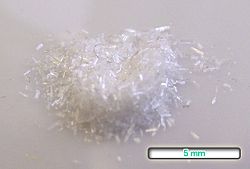Anti-infective medicines
Anthelminthics
Intestinal anthelminthics

Antifilarials
Antischistosomals and other antinematode medicines
Cysticidal medicines
Antibacterials
Access group antibiotics
- Amikacin
- Amoxicillin
- Amoxicillin/clavulanic acid (amoxicillin + clavulanic acid)
- Ampicillin
- Benzathine benzylpenicillin
- Benzylpenicillin
- Cefalexin
- Cefazolin [note 17]
- Chloramphenicol [note 18]
- Clindamycin
- Cloxacillin [note 19] [note 20]
- Doxycycline [note 21]
- Gentamicin
- Metronidazole
- Nitrofurantoin
- Phenoxymethylpenicillin (penicillin V)
- Procaine benzylpenicillin [note 22]
- Sulfamethoxazole/trimethoprim (sulfamethoxazole + trimethoprim)
- Trimethoprim
Watch group antibiotics
Reserve group antibiotics
Reserve antibiotics are last-resort antibiotics. The EML antibiotic book was published in 2022. [8] [9] [10]
Antileprosy medicines
Antituberculosis medicines

- Ethambutol
- Isoniazid
- Isoniazid/pyrazinamide/rifampicin (isoniazid + pyrazinamide + rifampicin)
- Isoniazid/rifampicin (isoniazid + rifampicin)
- Isoniazid/rifapentine (isoniazid + rifapentine)
- Pyrazinamide
- Rifampicin
- Rifapentine
- Amikacin α
- Amoxicillin/clavulanic acid (amoxicillin + clavulanic acid) α [note 28]
- Bedaquiline α
- Clofazimine α
- Cycloserine α [note 29]
- Delamanid α
- Ethionamide α [note 30]
- Levofloxacin α
- Linezolid α
- Meropenem α
- Moxifloxacin α
- P-aminosalicylic acid α
- Streptomycin α
Antifungal medicines
Antiviral medicines
Antiherpes medicines
Antiretrovirals
Nucleoside/nucleotide reverse transcriptase inhibitors
Non-nucleoside reverse transcriptase inhibitors
Protease inhibitors
Integrase inhibitors
Fixed-dose combinations of antiretroviral medicines
Medicines for prevention of HIV-related opportunistic infections
Other antivirals
Antihepatitis medicines
Medicines for hepatitis B
Nucleoside/Nucleotide reverse transcriptase inhibitors
Medicines for hepatitis C
Pangenotypic direct-acting antiviral combinations
Non-pangenotypic direct-acting antiviral combinations
No listings in this section.
Other antivirals for hepatitis C
No listings in this section.
Antiprotozoal medicines
Antiamoebic and antigiardiasis medicines
Antileishmaniasis medicines
Antimalarial medicines
For curative treatment
- Amodiaquine [note 41]
- Artemether [note 42]
- Artemether/lumefantrine (artemether + lumefantrine) [note 43]
- Artesunate [note 44]
- Artesunate/amodiaquine (artesunate + amodiaquine) [note 45]
- Artesunate/mefloquine (artesunate + mefloquine)
- Artesunate/pyronaridine tetraphosphate (artesunate + pyronaridine tetraphosphate)
- Chloroquine [note 46]
- Dihydroartemisinin/piperaquine phosphate (dihydroartemisinin + piperaquine phosphate)
- Doxycycline [note 47]
- Mefloquine [note 48]
- Primaquine [note 49]
- Quinine [note 50]
- Sulfadoxine/pyrimethamine (sulfadoxine + pyrimethamine) [note 51]
